SFX Book Club: A Canticle for Leibowitz
As regular readers of the SF Gateway blog will know, our good friends at SFX have kindly agreed to allow us to republish those articles from their SFX Book Club that relate to our SF Masterworks and/or SF Gateway titles. On this occasion, we revisit one of the seminal works of religious-themed SF, Walter M. Miller, Jr‘s remarkable A Canticle for Leibowitz. Taking us on this tour of a post-apocalyptic future rife with <ahem> revelations is the BSFA Award-winning author of the Ashraf Bey trilogy, Jon Courtenay Grimwood . . .
You could say that it takes luck to publish only one novel and for that novel to sell over two million copies and influence an entire generation of readers and writers. You could say it takes brilliance. But for Walter M. Miller, Jr it took guilt…
In 529AD the Italian Monastery of Monte Cassino was founded by St Benedict, who gave his name to the Benedictine monks (stay with us, this really matters). In 581 the Lombards destroyed it. In 883 it was the turn of the Arabs. The next time war reduced Monte Cassino to rubble was 1944, when it was bombed into the dirt by the Allied air force. The German forces survived by hiding in caves, but the Western world’s oldest monastery, most of its art treasures and a number of its priceless manuscripts were destroyed.
One of those involved in the bombing of Monte Cassino was a young tail gunner who’d turned 22 a couple of weeks before. His name was Walter M. Miller. In total, he flew 55 combat missions, and the bombing of Monte Cassino was to haunt him, quite possibly right up to the moment he shot himself through the head, just before his 73rd birthday (while working on a sequel).
 In A Canticle for Leibowitz the monastery at Monte Cassino becomes an abbey in the southwestern United States (as was), and the bombing becomes a nuclear war that has reduced the world to rubble, although it is the rubble of a civilisation. After the flame deluge of nuclear war came the simplification: a violent backlash against all those who designed and made the weapons that destroyed society. Books were burnt and literacy vanished, intellectuals and scientists were killed. A new and voluntary dark age descended on the already ravaged Earth.
In A Canticle for Leibowitz the monastery at Monte Cassino becomes an abbey in the southwestern United States (as was), and the bombing becomes a nuclear war that has reduced the world to rubble, although it is the rubble of a civilisation. After the flame deluge of nuclear war came the simplification: a violent backlash against all those who designed and made the weapons that destroyed society. Books were burnt and literacy vanished, intellectuals and scientists were killed. A new and voluntary dark age descended on the already ravaged Earth.
Against the back history, Miller traces the rise of a new civilisation over the course of 1,500 years, taking the world back to where we came in. It’s a lot funnier than it sounds. At least, the results are, by the time we meet them.
The novel opens with the finding of a list left by the Blessed Saint Leibowitz, founder of the Albertian Order of Leibowitz, who, before he converted to Catholicism, was a Jewish engineer working for the United States Army. The list reads: “Pound pastrami, can kraut, six bagels – bring home for Emma.”
The list is found by Brother Francis Gerard of Utah, who is punished rather than rewarded by his superiors. Apparently another miracle is not what the Church needs. And while the reader knows this is a shopping list, and another relic is a lottery ticket, that information is denied to the monks, who are all that protect knowledge in a world of robbers, mutants and wild animals. So the monks look for meaning in the strange lists, and robbers mistake beautifully painted copies for the original and tatty relics for poor copies. And all the time, Miller is really talking about us.
There’s a Zen dryness to A Canticle for Leibowitz; a sense of it being written by someone who needs to talk about what he’s seen by talking about something else. The book is really three linked novellas, with the first originally published in 1955, the second in 1956 and the third in 1957, all in The Magazine of Fantasy and Science Fiction. After some reworking, the three novellas were combined in 1959 to produce the book which won miller the 1961 Hugo Award.
Written at the height of the Cold War, Canticle is now regarded as the definitive post-bomb SF novel, but even this is to underestimate Walter M. Miller’s achievement. Because this is also a book about religion, and as such, is a forerunner to Robert Heinlein’s Stranger in a Strange Land (1961), Michael Moorcock’s Behold the Man (1969), and Mary Doria Russell’s The Sparrow (1997), among others.
A Canticle for Leibowitz also achieved status as a breakthrough book, receiving reviews from heavyweight papers across the world, and doing much to make science fiction novels acceptable. And it did all this with humour, intelligence, anger and conviction. Without it written SF would look very different.
A Canticle for Leibowitz is available as an SF Masterworks hardback. You can read more about Walter M. Miller in his entry at The Encyclopedia of Science Fiction.
This piece was written by Jon Courtenay Grimwood and appears courtesy of SFX magazine, where it was originally published as part of their regular SFX Book Club feature. You can subscribe to SFX magazine here and find more Book Club articles here.


